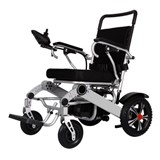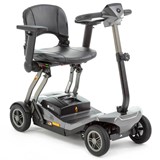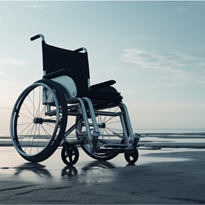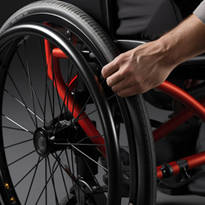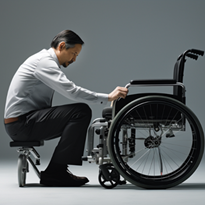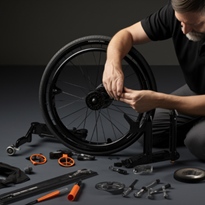When it comes to mobility, manual wheelchairs offer a reliable and versatile solution for individuals with mobility challenges. Selecting the right manual wheelchair can significantly impact your daily life, providing comfort, independence, and the freedom to move around with ease. In this comprehensive guide, we will explore essential factors to consider when choosing a manual wheelchair that perfectly suits your needs.
1. Assessing Personal Mobility Requirements and Lifestyle
When it comes to enhancing personal mobility, choosing the right mobility aid is of utmost importance. Whether you're dealing with temporary injuries or long-term mobility challenges, finding the perfect solution can significantly impact your daily life. In this comprehensive guide, we will explore how to assess your personal mobility requirements and lifestyle to select the most suitable mobility aid.
1. Evaluate Your Mobility Needs
The first step in choosing the right mobility aid is to evaluate your specific mobility needs. Consider the following questions:
- Do you need mobility assistance for indoor use, outdoor activities, or both?
- Will you primarily use the mobility aid at home or require it for travel and outings?
- Do you need a temporary solution for a short-term injury, or are you looking for a long-term mobility aid?
- Are you capable of self-propelling, or do you need assistance from a caregiver or companion?
Understanding your unique requirements will help narrow down the options and ensure you select the most suitable mobility aid for your lifestyle.
2. Types of Mobility Aids
Mobility aids come in various types, each designed to serve specific purposes. Let's explore some common options:
a) Canes and Walking Sticks
Canes and walking sticks are ideal for individuals who need minimal support and balance assistance. They are lightweight, portable, and suitable for those with mild mobility challenges.
b) Crutches
Crutches provide support for individuals with leg injuries or post-surgery recovery. They come in various types, including underarm crutches and forearm crutches, offering different levels of support.
c) Walkers
Walkers are stable mobility aids that provide support and stability for individuals with balance issues or limited weight-bearing abilities. They come in various designs, including standard walkers, rollators with wheels, and knee walkers.
d) Wheelchairs
Wheelchairs offer a versatile solution for individuals with more significant mobility challenges. Manual wheelchairs are propelled by the user or a caregiver, while power wheelchairs are motorized for easier mobility.
e) Mobility Scooters
Mobility scooters are motorized devices designed for outdoor use and longer distances. They offer a comfortable and convenient mobility solution for those with limited stamina.
3. Consider Your Lifestyle
Your lifestyle plays a crucial role in determining the most suitable mobility aid. Consider the following lifestyle factors:
- Daily Activities: Assess the activities you regularly engage in, such as household chores, work, hobbies, and social outings. Ensure that the mobility aid can accommodate your daily routines.
- Travel Plans: If you travel frequently, consider a portable mobility aid that can be easily folded or disassembled for transportation.
- Indoor vs. Outdoor Use: Determine whether you need the mobility aid mainly for indoor use, outdoor adventures, or a combination of both.
- Space Constraints: If you have limited space at home or in your vehicle, opt for a mobility aid that is compact and easy to store.
2. Understanding Different Types of Manual Wheelchairs
Manual wheelchairs come in various types, each designed to serve distinct purposes. The most common types include:
a) Transport Wheelchairs
Transport wheelchairs are lightweight and designed for easy transport, making them perfect for travel and short trips. They are propelled by a companion or caregiver, and while they offer excellent portability, they may not be ideal for self-propulsion.
b) Standard Manual Wheelchairs
Standard manual wheelchairs are sturdy, reliable, and suitable for everyday use. They often have large rear wheels, allowing the user to self-propel with ease. These wheelchairs are available with various customization options to meet individual needs.
c) Active Wheelchairs
Active wheelchairs are specifically designed for individuals with an active lifestyle. They are lightweight, maneuverable, and ideal for sports activities. Active wheelchairs offer better performance and responsiveness but may have less padding for extended comfort.
d) Ergonomic Wheelchairs
Ergonomic wheelchairs prioritize user comfort and posture. They come with features like contoured seats, adjustable armrests, and proper back support. These wheelchairs are ideal for individuals who spend long hours sitting.
3. Consider Wheelchair Dimensions
The dimensions of a manual wheelchair play a vital role in determining comfort and accessibility. Pay close attention to the seat width, depth, and height. A properly fitted wheelchair ensures better posture and reduces the risk of pressure sores or discomfort.
4. Weight Capacity
Always check the weight capacity of the manual wheelchair to ensure it can support your body weight. Exceeding the weight limit can compromise the wheelchair's structural integrity and pose safety hazards.
5. Wheelchair Weight
Consider the weight of the manual wheelchair itself, especially if you plan on transporting it frequently. Lighter wheelchairs are easier to handle and load into vehicles.
6. Maneuverability and Turning Radius
For easy navigation through tight spaces, consider a wheelchair with a smaller turning radius. This feature is particularly essential for indoor use and crowded environments.
7. Comfort and Cushioning
Comfort is paramount when selecting a manual wheelchair. Look for adequate cushioning, breathable materials, and adjustable features to ensure maximum comfort during prolonged use.
8. Durability and Maintenance
Invest in a manual wheelchair made of high-quality materials to ensure durability. Regular maintenance is also crucial to prolong the wheelchair's lifespan and keep it in optimal condition.
9. Trial and Test
Whenever possible, try out different manual wheelchair models before making a decision. Test how it feels to sit in the wheelchair, maneuver it, and assess its overall performance.
10. Cost and Insurance Coverage
Finally, consider the cost of the manual wheelchair and whether it fits within your budget. Check if your health insurance covers any part of the cost, as this can significantly reduce your financial burden.
In conclusion, selecting the right manual wheelchair involves understanding your unique needs, exploring various types of wheelchairs, and prioritizing comfort, maneuverability, and durability. By considering these factors, you can make an informed decision that will enhance your mobility and improve your overall quality of life. Remember, a well-suited manual wheelchair is not just a mobility aid; it is a gateway to independence and freedom.

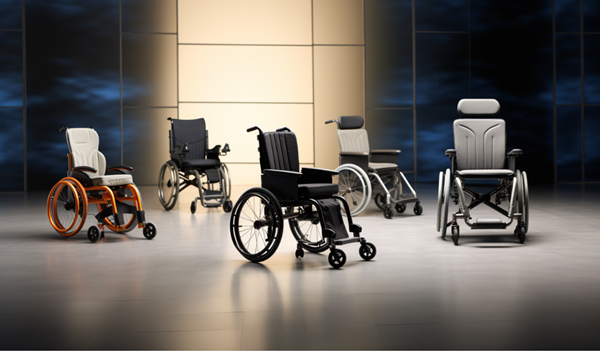








-160x160-state_article-rel-cat.png)






